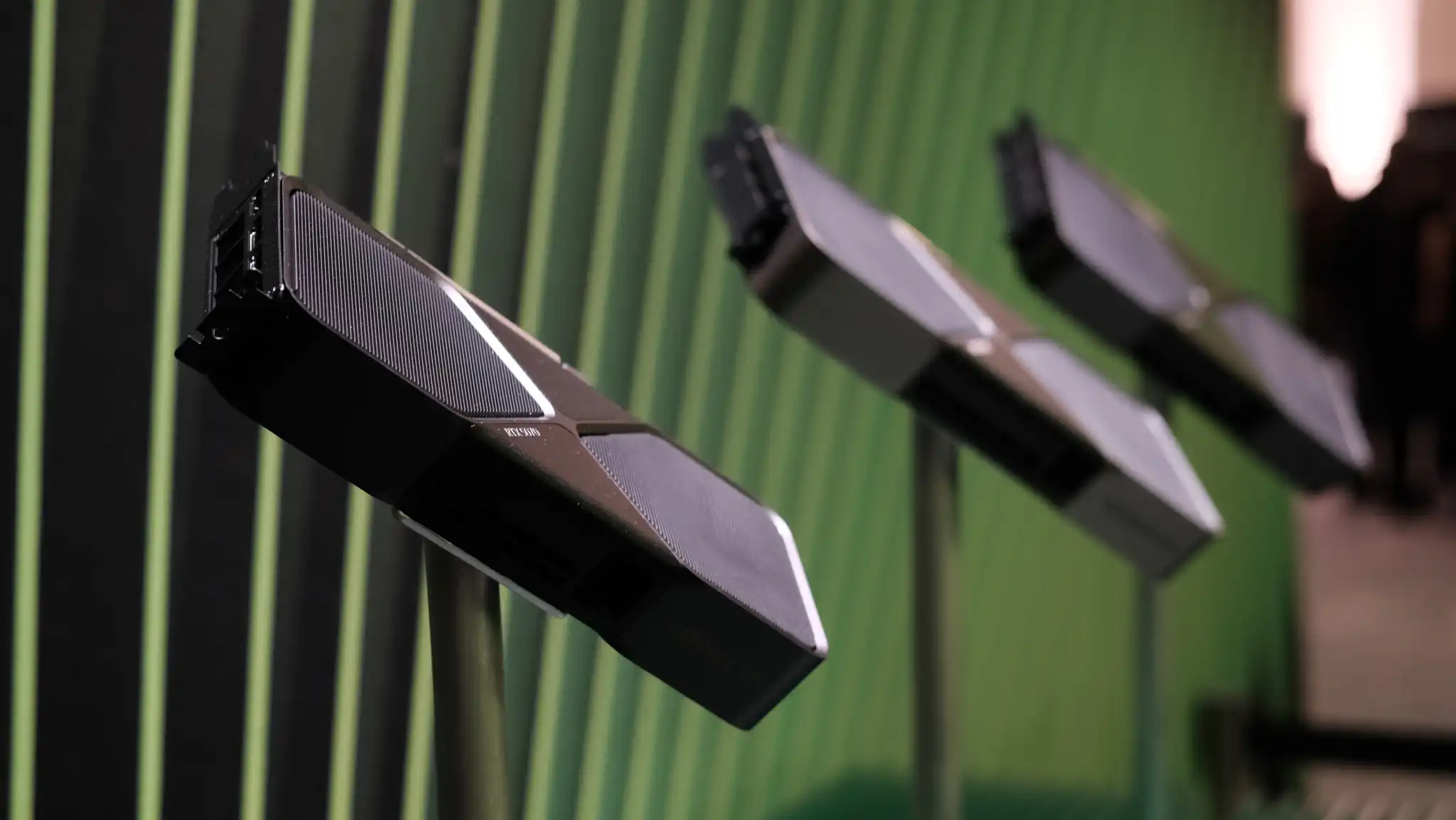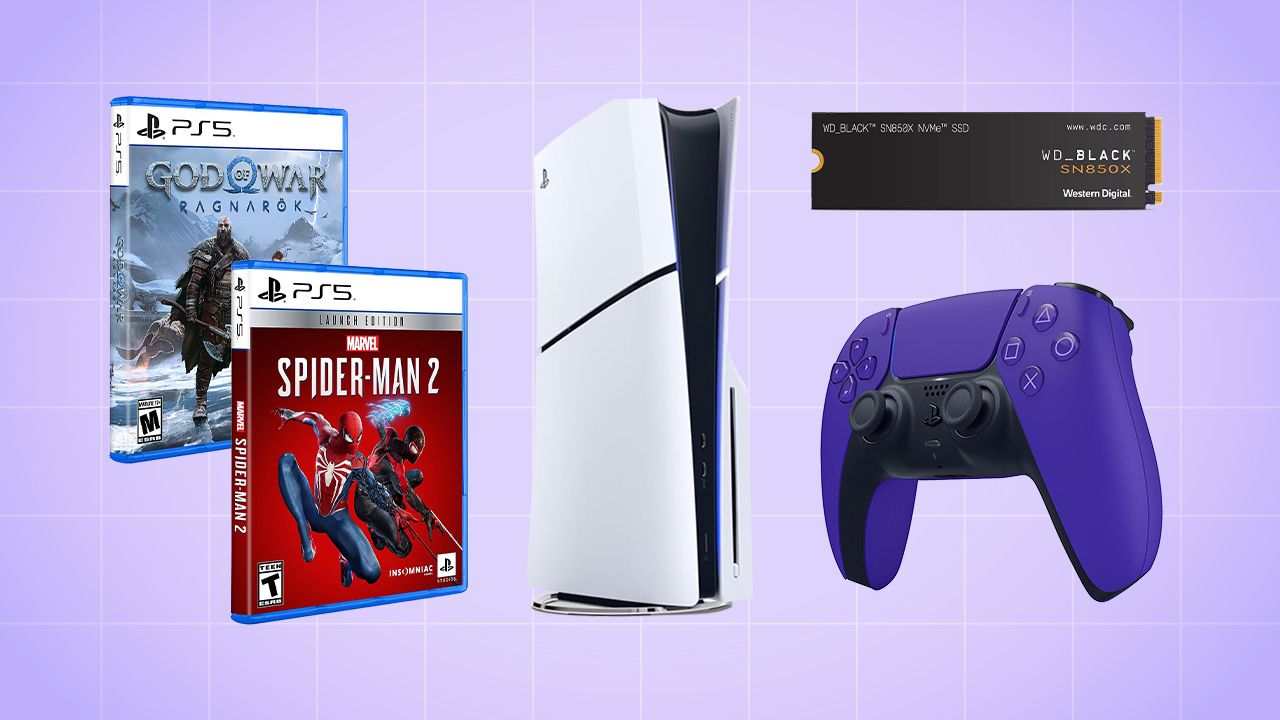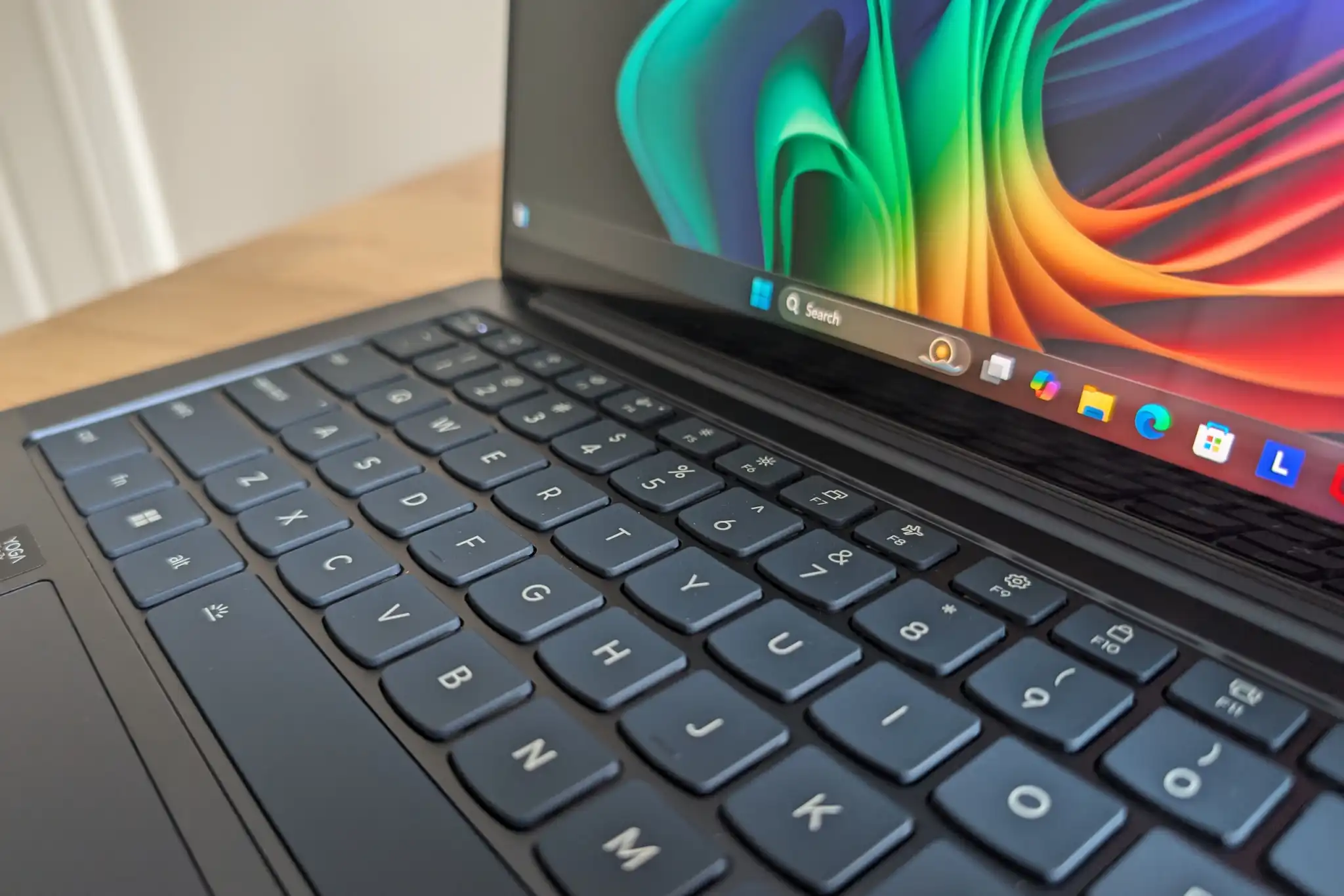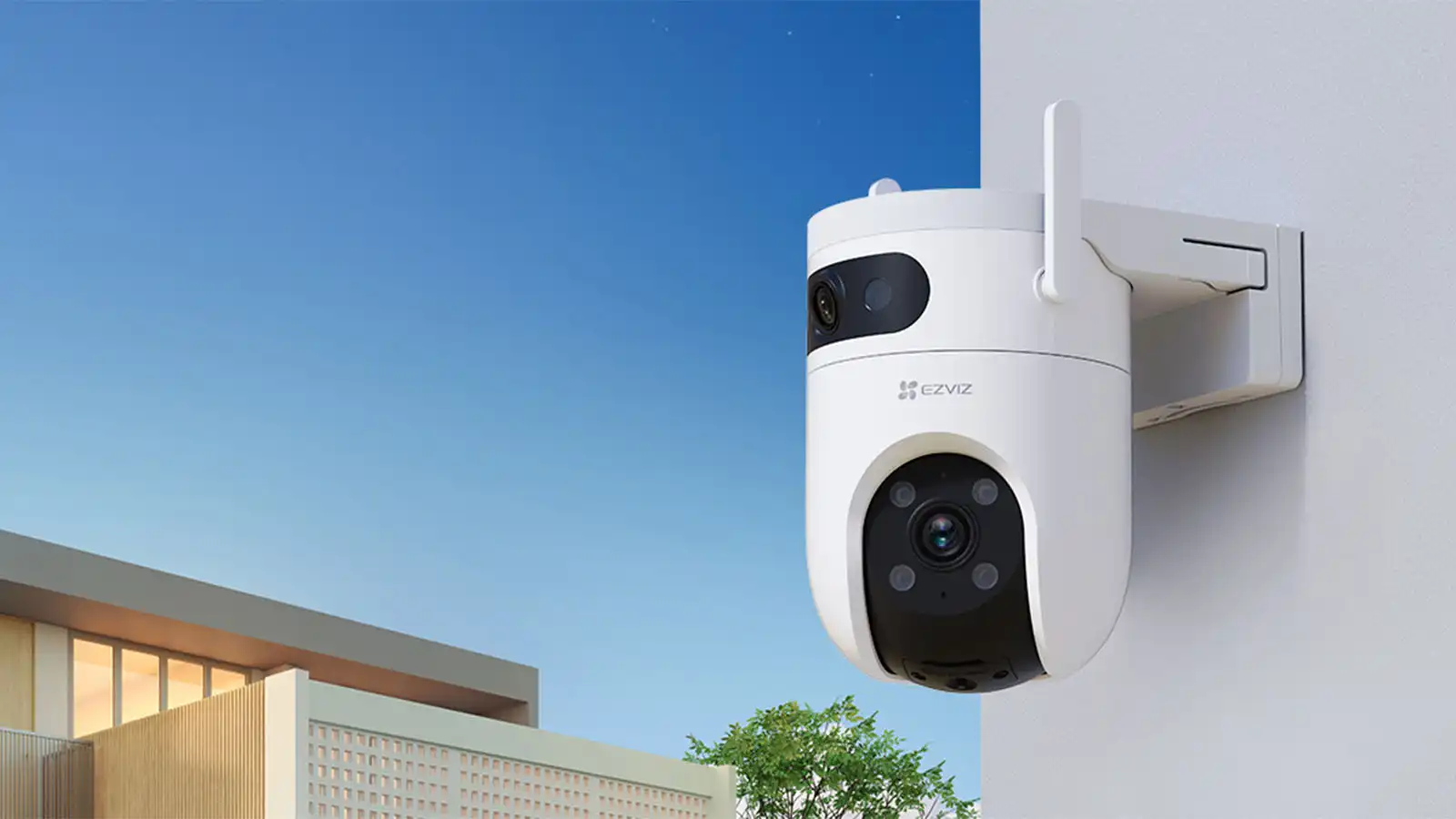Nvidia is truly masterful at one thing: perfectly showcasing the graphics cards at the launch of a new GPU generation. This isn’t bad in itself; after all, a fruit seller at the market also advertises his bright red apples as a real treat.
But apple doesn’t cost $2,000 like Nvidia’s new gaming flagship, the GeForce RTX 5090. Let’s take a close look at the technical specifications of the four new graphics cards — the RTX 5070, RTX 5070 Ti, RTX 5080, and RTX 5090 — so that you can make the right purchase decision for your needs without having to parse all the marketing talk about DLSS 4 games that haven’t even released yet.
Of course, you should wait for independent tests to be published just before the 5090 and 5080 go on sale at the end of January 2025. The launch of the 5070 and 5070 Ti will then follow at the end of February.
From $2,000: Nvidia GeForce RTX 5090
| GeForce RTX 4090 | GeForce RTX 5090 | |
| GPU | AD102-300-A1 / AD102-301-A1 | GB202-300-A1 |
| Codename | Ada Lovelace | David Blackwell |
| Computing power (FP32) | 82.6 TFLOPS | 104.9 TFLOPS |
| Shader units | 16.384 | 21.760 |
| Streaming processors | 128 | 170 |
| GPU clock base / boost | 2.230 / 2,520 MHz | 2.010 / 2,410 MHz |
| Memory bus | 384 bit | 512 bit |
| Memory type | GDDR6 | GDDR7 |
| Graphics memory | 24 GB | 32 GB |
| TGP | 450 watts | 575 Watt |
| RRP | $1599 | $1999 |
Have you already got used to the fact that a single hardware component alone now costs as much as a top gaming PC used to? Well, I haven’t, but that’s how the free market economy works, and Nvidia has de facto monopolized the graphics card market with an 88% share. So should we be grateful that Nvidia offers us by far the fastest graphics card in the world for a surcharge of “only” $400 over its predecessor, the RTX 4090?
Let’s put it this way: if PC gaming is one of your favorite hobbies and you have the money, then go for it.
The RTX 5090 has almost 33 percent more shader units and FP32 computing power has increased by almost 27 percent according to the data sheet. In addition, there is over 33 percent more VRAM with a wider memory interface (33%) and faster GDDR7 memory type (33%). As you can see, the technical data alone promises a performance increase of around 30 percent. Added to this are the improvements to the GPU architecture, which should also ensure more FPS, as well as the elephant in the room: DLSS 4.
It was predictable that Nvidia would almost exclusively show benchmarks with activated DLSS 4 and ray tracing at the launch of the RTX 50-series. However, you should take the predicted performance increase of 100 percent and more with a pinch of salt, as we don’t yet know what effect the additional AI frames will have on image quality. Not to mention that seven gaming benchmarks (selected by Nvidia) only reflect a tiny fraction of the gaming market.

Nvidia
The RTX 5090 is the graphics card of choice if you earn your money with AI development and can’t afford a professional card. Nvidia promises a performance increase of up to 100 percent compared to the 4090 in this area.
From $999: Nvidia GeForce RTX 5080
| GeForce RTX 4080 | GeForce RTX 5080 | |
| GPU | AD103-300-A1 / AD103-301-A1 | GB203-400-A1 |
| Codename | Ada Lovelace | David Blackwell |
| Computing power (FP32) | 47 TFLOPS | 56.3 TFLOPS |
| Shader units | 9.728 | 10.752 |
| Streaming processors | 76 | 84 |
| GPU clock Base / Boost | 2.210 / 2,510 MHz | 2.300 / 2,620 MHz |
| Memory bus | 256 bit | 256 bit |
| Memory type | GDDR6 | GDDR7 |
| Graphics memory | 16 GB | 16 GB |
| TGP | 320 watts | 360 watts |
| RRP | $1199 | $999 |
In contrast to the 5090, the technical data of the Nvidia GeForce RTX 5080 looks rather modest. Compared to its predecessor, the 5080 only has around 10 percent more shader units and, according to Nvidia, the FP32 computing power has increased by just under 20 percent.
The amount of memory and connection remain the same at 16GB and 256 bits. However, the RTX 5080 benefits from faster GDDR7 VRAM (33%) and the MSRP has been reduced by $200.
Due to the small increase in raw computing power, the 5080 is not a price-performance champion. This may be different for games that support DLSS 4. But as I said, only a small part of the gaming world supports DLSS 4, so it’s important to weigh things up carefully. You should also be critical of Nvidia’s traditionally “restrained” memory configuration.

Nvidia
Nvidia uses various techniques to keep memory requirements artificially low, but if the VRAM overflows, this can lead to massive drops in performance. And the memory requirements of future games will tend to increase significantly, so you should also take a critical look at the future-proofing of the RTX 5080.
So who should buy the 5080? An upgrade from the 4080 makes no sense, but as the owner of a 20 or 30 series card, the 5080 is an attractive option if you’re ready to fork over $999 for a graphics card.
From $749: Nvidia GeForce RTX 5070 Ti
| GeForce RTX 4070 Ti | GeForce RTX 5070 Ti | |
| GPU | AD104 | GB203 |
| Codename | Ada Lovelace | David Blackwell |
| Computing power (FP32) | 40.1 TFLOPS | 43.9 TFLOPS |
| Shader units | 7.680 | 8.960 |
| Streaming processors | 60 | 70 |
| GPU clock base / boost | 2.310 / 2,610 MHz | 2.300 / 2,450 MHz |
| Memory bus | 192 bit | 256 bit |
| Memory type | GDDR6 | GDDR7 |
| Graphics memory | 12 GB | 16 GB |
| TGP | 285 watts | 300 watts |
| RRP | $799 | $749 |
In my opinion, the Nvidia GeForce RTX 5070 Ti currently offers the best price-performance ratio of the new 50-series — at least on paper. The RTX 5070 Ti already has almost 17 percent more shader units compared to its predecessor.

Nvidia
The decisive factor, however, is the amount of memory and the memory bus size, which has been increased from 12 to 16 gigabytes and from 192 to 256 bits. There is also GDDR7 VRAM (33% more than predecessor); and the street price is a tad cheaper.
This makes the 5070 Ti one of the extremely rare Nvidia cards with a reasonable memory configuration. In my opinion, this could wind up being the perfect card from Nvidia for 1440p gamers!
From $549: Nvidia GeForce RTX 5070
| GeForce RTX 4070 | GeForce RTX 5070 | |
| GPU | AD104 | GB205 |
| Codename | Ada Lovelace | David Blackwell |
| Computing power (FP32) | 29.1 TFLOPS | 30.8 TFLOPS |
| Shader units | 5.888 | 6.144 |
| Streaming processors | 46 | 48 |
| GPU clock Base / Boost | 1.920 / 2,475 MHz | 2.160 / 2,510 MHz |
| Memory bus | 192 bit | 192 bit |
| Memory type | GDDR6 | GDDR7 |
| Graphics memory | 12 GB | 12 GB |
| TGP | 200 watts | 250 watts |
| RRP | $599 | $549 |
The worst deal in the new 50-series looks to be the Nvidia GeForce RTX 5070, which offers a modest 4 percent more shader units and an only imperceptibly higher FP32 computing power of 30.8 TFLOPS compared to its predecessor.
However, the RTX 5070 only becomes a pipe-wrecker due to the inadequate memory equipment and connection, with 12 gigabytes and a 192-bit wide interface. Even the faster GDDR7 VRAM cannot make up for this. To put it bluntly: it is quite outrageous to equip a graphics card costing over $500 with only 12 gigabytes.

Nvidia





